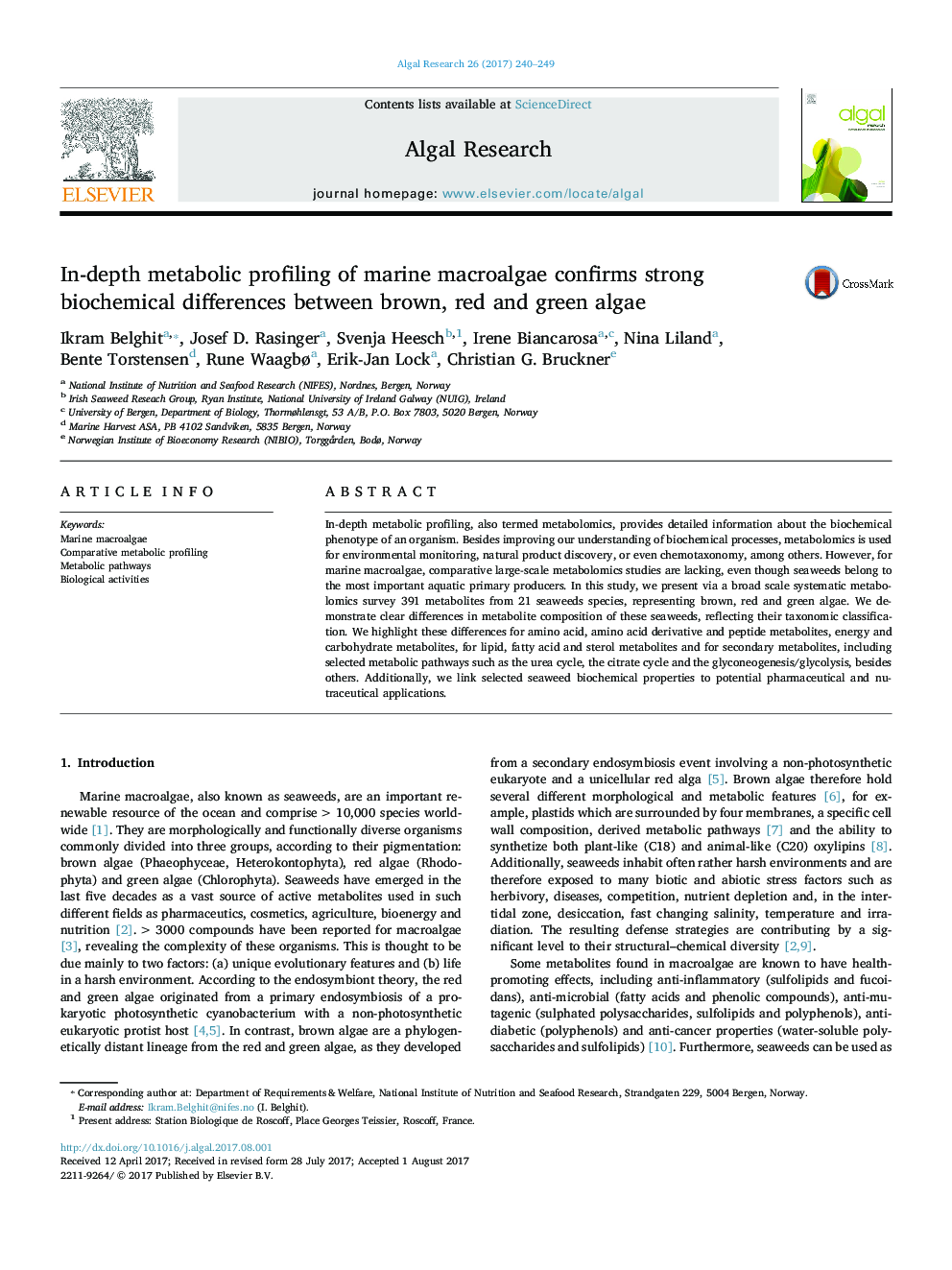| Article ID | Journal | Published Year | Pages | File Type |
|---|---|---|---|---|
| 5478287 | Algal Research | 2017 | 10 Pages |
Abstract
In-depth metabolic profiling, also termed metabolomics, provides detailed information about the biochemical phenotype of an organism. Besides improving our understanding of biochemical processes, metabolomics is used for environmental monitoring, natural product discovery, or even chemotaxonomy, among others. However, for marine macroalgae, comparative large-scale metabolomics studies are lacking, even though seaweeds belong to the most important aquatic primary producers. In this study, we present via a broad scale systematic metabolomics survey 391 metabolites from 21 seaweeds species, representing brown, red and green algae. We demonstrate clear differences in metabolite composition of these seaweeds, reflecting their taxonomic classification. We highlight these differences for amino acid, amino acid derivative and peptide metabolites, energy and carbohydrate metabolites, for lipid, fatty acid and sterol metabolites and for secondary metabolites, including selected metabolic pathways such as the urea cycle, the citrate cycle and the glyconeogenesis/glycolysis, besides others. Additionally, we link selected seaweed biochemical properties to potential pharmaceutical and nutraceutical applications.
Related Topics
Physical Sciences and Engineering
Energy
Renewable Energy, Sustainability and the Environment
Authors
Ikram Belghit, Josef D. Rasinger, Svenja Heesch, Irene Biancarosa, Nina Liland, Bente Torstensen, Rune Waagbø, Erik-Jan Lock, Christian G. Bruckner,
